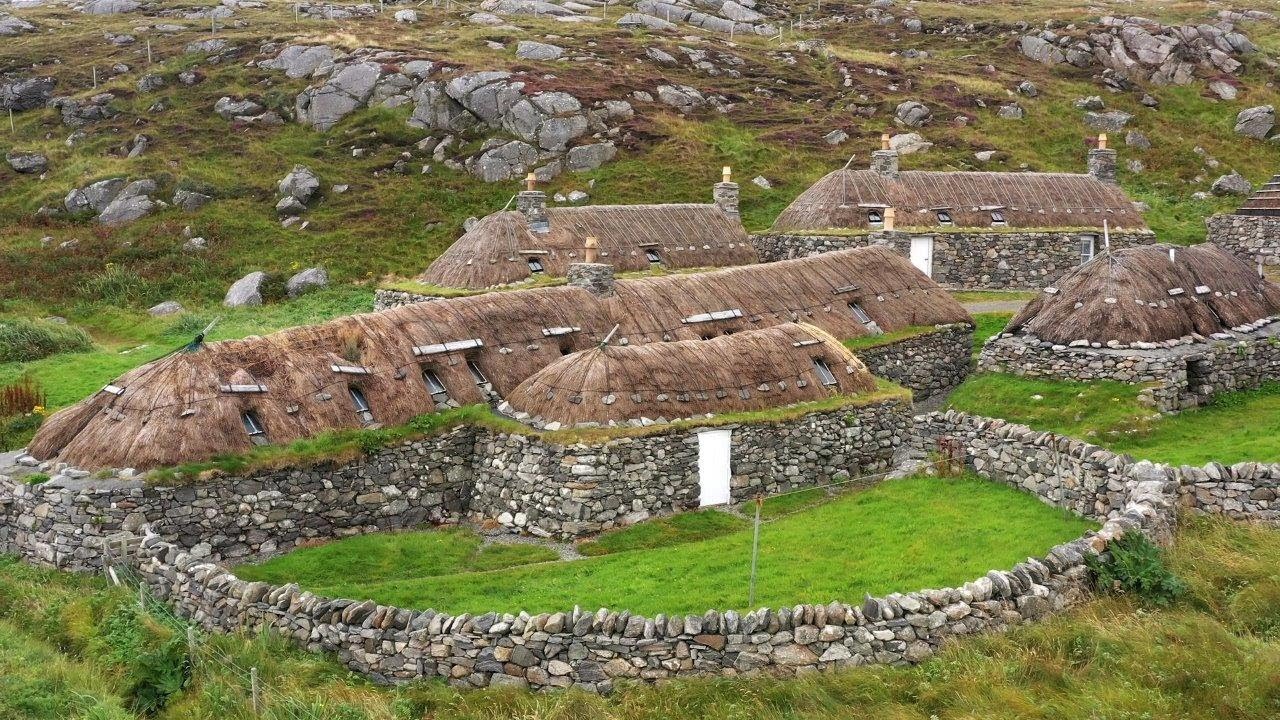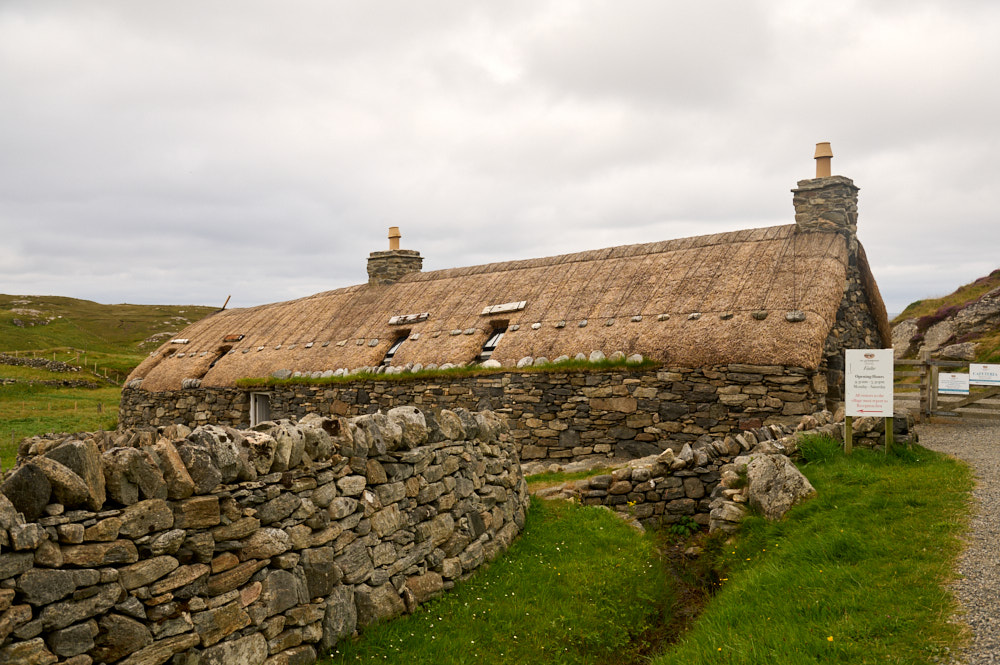Introduction
Once abandoned, the traditional Scottish village on the Isle of Lewis stands as a testament to the resilience and ingenuity of Highland life. For centuries, Highlanders and their livestock took shelter in these humble one-room abodes, illustrating the close relationship between the community and its environment.
Architectural Features
Constructed with packed earth floors, sturdy drystone walls, and thatched roofs, these houses provided vital refuge from the harsh conditions of the North Atlantic. The architectural design reflects a deep understanding of local materials and climate, ensuring durability and comfort in a challenging landscape.

The Central Hearth
At the heart of each dwelling was a central hearth, which not only warmed the space but also served as a focal point for daily life. This fire was crucial for cooking and providing light during the long winter months. A divider was typically installed to separate human inhabitants from their farm animals, which were often huddled at one end of the building, sharing the warmth of the fire. This close-knit living arrangement reflects the practical adaptations of the Highlanders to their environment and available resources, promoting a sense of community and shared responsibility.
Modernization and Decline
Between 1945 and 1965, the other crofts and blackhouses on the Isle of Lewis underwent modernization, gaining access to running water and electricity. However, residents continued to live in these traditional homes until the 1970s, when the last elderly inhabitants moved into more contemporary residences that required less upkeep. This transition marked a significant cultural shift, as traditional ways of life began to fade, leaving the village at risk of becoming nothing more than a distant memory.

Restoration Efforts
Fortunately, in 1989, Urras nan Gearrannan, a local trust, took significant steps to restore and preserve these historic buildings. Their efforts focused not only on maintaining the structures but also on revitalizing the cultural heritage of the area. The commitment to restoration highlights the importance of preserving historical sites as a means of maintaining cultural identity and community pride.
Current Use and Cultural Significance
Today, the renovated blackhouses serve as unique holiday accommodations, allowing visitors to immerse themselves in this historic environment. Families can rent individual cottages, while budget travelers have the option to stay in a hostel, making the village accessible to a wide range of guests. Each building is named after the family that once called it home, preserving the personal histories intertwined with these structures.

Museum and Cultural Activities
Various parts of the village now function as a museum, celebrating this traditional way of island life. Visitors can explore exhibits that detail the history, culture, and daily practices of the Highlanders, including the significance of the landscape and its resources. Additionally, they might even have the opportunity to witness the craftsmanship of Harris Tweed weaving, keeping the spirit of this vibrant culture alive. The unique textiles produced in this region have gained international acclaim, further linking the village to its rich heritage.
Conclusion
In conclusion, the revival of this traditional Scottish village on the Isle of Lewis not only preserves the architectural legacy of its past but also breathes new life into the cultural practices that define the Highland way of life. As visitors engage with this history, they contribute to the ongoing narrative of resilience, adaptation, and community spirit that continues to thrive in this remarkable setting. The village stands not just as a relic of the past but as a living, breathing community that honors its heritage while embracing the future.

